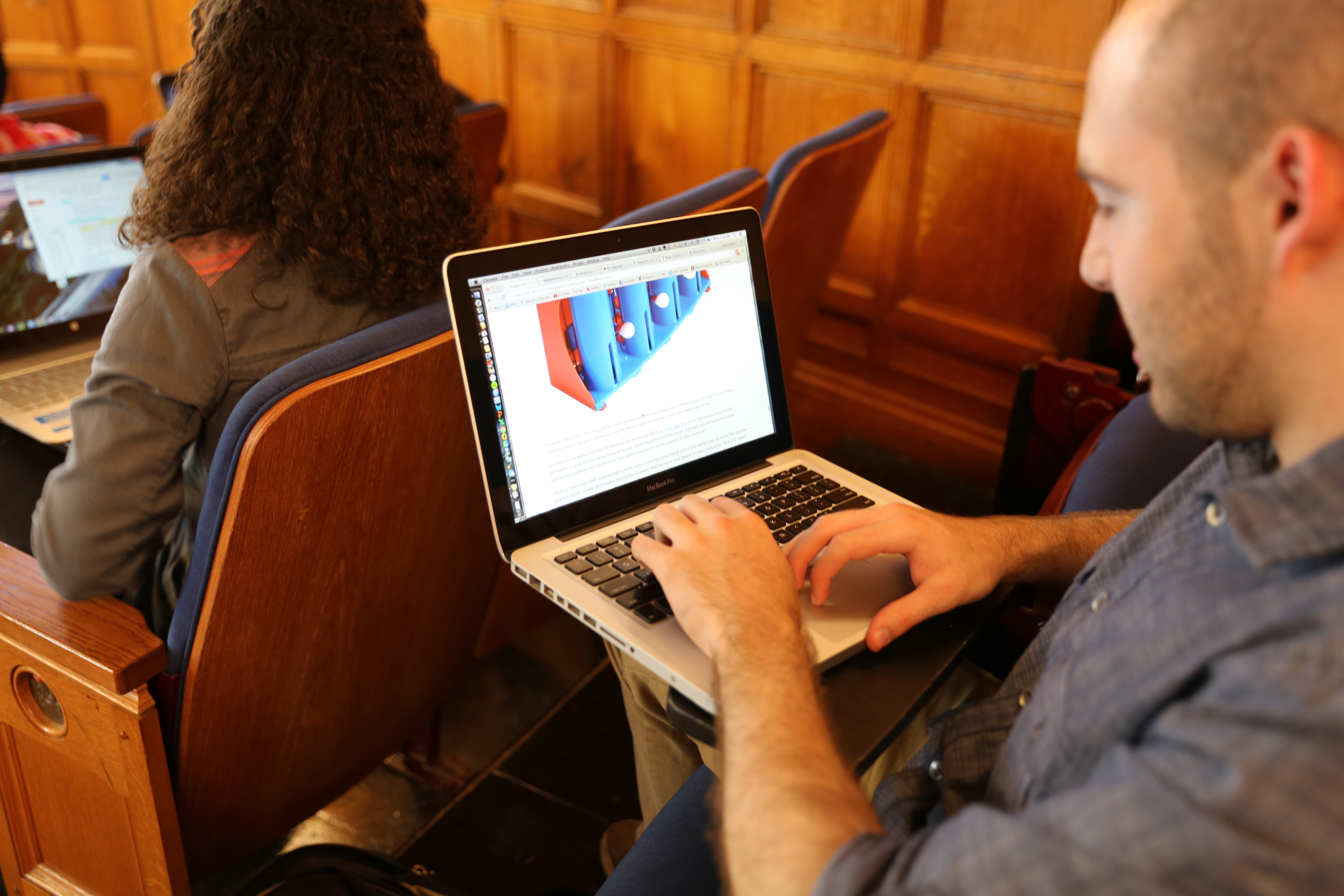
With the introduction last fall of CS50, otherwise known as CPSC 100, the University for the first time hired undergraduate students as learning assistants.
The undergraduate learning assistants were hired in November 2014 only after a motion was approved to make an exception to the University’s provisions on undergraduate instruction. Previously, undergraduates did not serve in teaching roles other than as peer tutors or graders. Administrators called CS50 a “true experiment” because it allowed undergraduate assistants to engage in a greater range of teaching responsibilities. Despite initial reservations from some administrators about how to best handle the student-to-ULA relationship, the successful implementation of ULAs in the course may serve as a model for expanded undergraduate teaching roles, as the University considers how it will accommodate the new residential colleges expansion and subsequent increase in undergraduates. Computer science professors interviewed agreed that using ULAs in other understaffed lectures would be very advantageous for a department with a strained graduate student population.
Computer Science Department Chair Joan Feigenbaum said the ULAs were a great success.
“The students in CPSC 100a gave them rave reviews,” she said. “We would love to be able to use ULAs in other classes as well.”
The introduction of ULAs only to CS50 is part of a three-year experiment designed to evaluate the new role, CS professor Daniel Spielman said.
While the Computer Science Department and other University courses have previously made use of undergraduate graders and peer tutors, students had never filled both roles simultaneously until last semester. Yale College Dean Jonathan Holloway said there is a key difference between undergraduate graders and ULAs — graders are presented with completed assignments, while ULAs play a larger role in guiding their peers to the final product.
Computer science professor James Aspnes said the ULAs themselves can learn from their teaching experience and are often more approachable than graduate teaching fellows. He also said the number of potential ULAs will rise with increasing undergraduate enrollments.
“Other universities, including Harvard and Stanford, make extensive use of undergraduate assistants in computer science courses,” Feigenbaum said. “I hope that Yale will soon do so as well. Both the ULAs and the students in our classes would benefit immensely, because computer science has always been something that students learn collaboratively and teach each other.”
Holloway said Yale is one of the few schools that has not made significant use of undergraduate learning assistants. He added that for faculty to feel comfortable using undergraduates in the capacity of a teaching assistance, ULA grading must be confidential.
“It would be a violation of confidentiality if students could grade their friends’ assignments. The grade would be tainted,” Holloway said.
At Harvard, where undergraduate teaching assistants work in many classes, the guidelines for the position highlight potential pitfalls in such an arrangement.
The guidelines address potential academic implications of undergraduate graders, stating that undergraduate course assistants may participate in student evaluation, but should not be involved in subjective evaluations of essays and examinations.
“[As] undergraduates may fail to recognize the implications of serving in an instructional role, instructors should take special responsibility for initiating discussions about professional conduct, including the impropriety of amorous relationships with students and the importance of both equity and confidentiality,” the Harvard guidelines state.
Still, Spielman said the fear of “favoritism” is often overstated. He added that in classes where he has undergraduate graders, he has students identify their homework and tests by a serial number so the grader will not know whose homework they are grading.
The potential use of ULAs may also ameliorate the long-standing challenges faced by graduate students in the department. Professors and graduate students have long complained that they are strained to cover all the lectures in the increasingly popular department. Many courses, especially introductory courses, are understaffed.
Aspnes, although supportive of ULAs, said in the long run the University should focus on increasing the number of graduate students in the department and encouraging those students to serve as teaching assistants.
Graduate teaching assistant Chuqiao Xu GRD ’16 said the department has a small number of teaching assistants at the moment. She added that one of the reasons the department struggles to find teaching assistants is because Yale’s master’s program in computer science is only one year long, which means many master’s students do not have time to teach in addition to taking classes and finding jobs.
While CS50 continues its three-year trial with the ULA model, the University may have to address the use of undergraduate teaching assistants in a broader academic context as it prepares for the opening of two new residential colleges. While the new college expansion will ultimately result in a 15 percent undergraduate increase, there are no plans to expand the Graduate School of Arts and Sciences. The discrepancy will result in a shortage of graduate student TAs, Holloway said.
Faculty of Art and Science Dean Tamar Gendler said that with the opening of the two new colleges, the University remains committed to providing high-quality teaching opportunities for graduate students, but is also exploring ways that undergraduates might serve as learning assistants in certain courses. She cited CS50 as an experiment that may contribute to the discussions.
“That is a debate that is going to be coming down the pipe,” Holloway said. “We are predicting a shortage in TAs for several major courses. But we have enough talented seniors who can be great assistants.”







